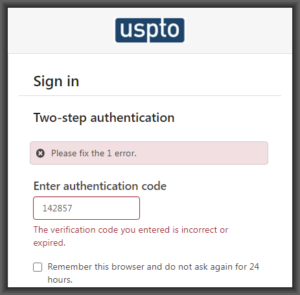On April 7, 2021 I presented a webinar entitled Worry-free use of ePCT with EFS-Web and e-filing PCT applications at the USPTO. (I publicized it in this blog article on March 23, 2021.) More than 400 people attended. Now a video recording of the webinar is available, an hour and 49 minutes in duration. You can download the presentation materials here and you can watch the video recording here.
The webinar attendees and I had the great good luck that Ann Bardini, who is a WIPO person who is one of the developers of the ePCT system, was able to join at the last minute as a co-presenter for this webinar.
This webinar explained how and why it is that you no longer need to worry about whether it is okay to use ePCT when filing PCT applications at the USPTO.
On May 6, 2016 the USPTO published a Federal Register notice warning filers against the use of ePCT in connection with filing of PCT applications at the USPTO. The notice identified an aspect of 37 CFR § 5.15 (the “Foreign Filing License rule”) which, as interpreted by the USPTO, supposedly put into question the circumstances in which a filer could use ePCT to generate a ZIP file for uploading to EFS-Web in the filing of a PCT application.
On September 30, 2020 the USPTO promulgated a change to 37 CFR § 5.15 which lifted this cloud over the use of ePCT.
In this webinar, I explained the many reasons why it is a Best Practice (and indeed always was a Best Practice, notwithstanding the 2016 Federal Register notice) to use ePCT whenever possible in the process of filing a PCT application at the USPTO. I explain what the cloud was that had been placed over ePCT in 2016, and I explain how and why that cloud has been lifted. I described how to comply with Foreign Filing License rules in the filing of PCT applications, including use of RO/US or RO/IB, and including cases where you do or do not have an FFL from your priority application that is broad enough to cover the entirety of your PCT disclosure.
Who should watch this recording? A chief target to watch this recording is the person who has been scared about using ePCT ever since the USPTO published that Federal Register notice on May 6, 2016. Hopefully by watching this recording, you can overcome any fear you may have had during these past five years about running afoul of export control laws or foreign filing license violations, a fear that may have arisen because of the wording of the 2016 notice.
Another target person to watch this recording is the person who has known all along that it is a Best Practice to use ePCT to the full extent possible in all aspects of PCT filings, and who has not been able to do so because your supervisor or your client has been scared of using ePCT because of that 2016 Federal Register notice, and has told you that you are not allowed to use ePCT. Hopefully by watching this recording, you will be able to gain information that you can pass along to others such as that supervisor or client, to help them overcome their concerns.
Finally there may be some who were never aware of this 2016 Federal Register notice, but simply have not been using ePCT, and who keep hearing about ePCT and have reached a realization that there is probably something important and smart about using ePCT or otherwise people would not keep talking about ePCT all the time. If you are in this category, please watch this recording. You can snooze through the part about why it was that in the past there were so many people who were scared to use ePCT, and when we get to the part about why it is smart to use ePCT now, you can perk up and you can learn why it is now a Best Practice to use ePCT as much as you can in all aspects of the PCT filing process.
Want to make sure you don’t miss out on other helpful webinars in the future? Make sure you subscribe to this blog.


